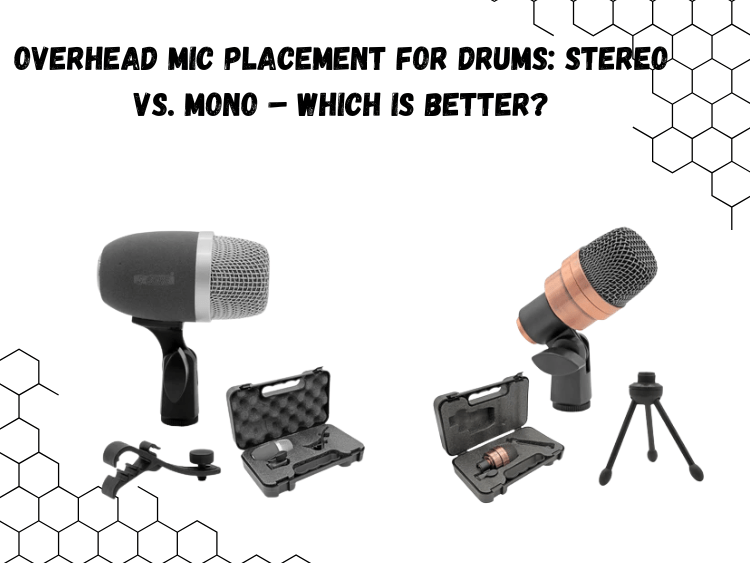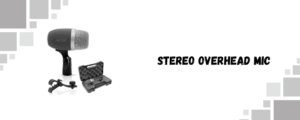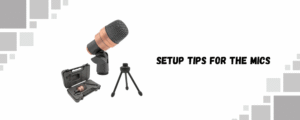When it comes to capturing the full character of a drum kit, nothing plays a bigger role than your overhead mics. They don’t just catch cymbals—they shape the entire spatial perception of the kit. Whether you’re recording in a studio or miking for live sound, choosing between stereo and mono overheads can completely change how your drums hit in a mix.
So, what’s the better route—stereo miking drums or a single overhead for a more focused sound? Let’s break it down, step by step.
What Do Overhead Mics Actually Do?
Drum overhead mics are often misunderstood. They’re not just for cymbals. Done right, they give you the entire kit’s layout: the shimmer of the ride, the attack of the snare, the breath of the toms, even the bounce of the room.
The way you place these mics—whether using a stereo configuration or a mono setup—impacts everything from phase relationships to stereo width and transient detail.
If you’re not paying attention to overhead mic technique, even the tightest snare sound can feel flat and disconnected.
The Case for Stereo Overheads
Stereo miking is the go-to method for most professional recordings, and for good reason. It gives your kit dimension. With a proper stereo overhead setup, you can place the toms left to right in the mix, let cymbals breathe, and create a more immersive listening experience.
There are a few common stereo techniques:
- XY Configuration: Two cardioid mics placed at a 90-degree angle with capsules close together. Great for mono compatibility and phase coherence.
- Spaced Pair (A/B): Two mics spaced several feet apart, capturing a wider stereo image. This method adds more room sound but can introduce phase issues if not measured correctly.
- ORTF: A hybrid approach that mimics human ear spacing with mics at a 110-degree angle. Offers both depth and realistic imaging.
In a studio with decent acoustics, a stereo pair—placed equidistant from the snare—lets you record not just the drums, but how they interact with the space around them. That interaction is what gives a track life.
When Mono Makes Sense
Stereo isn’t always better. There are real advantages to using a mono overhead, especially in smaller rooms or live setups.
With mono overhead miking, you’re capturing a focused, phase-coherent image of the kit. There’s no risk of weird stereo imbalances or room reflections messing with your tone. This is especially useful if you’re close-miking everything else and just need one mic to add a natural “glue” to the sound.
Live sound engineers often lean toward mono to maintain clarity and avoid stereo collapse in venues with questionable PA systems. Plus, when you’re mixing in mono (as many pros do during the initial stages), a mono overhead gives you predictable, reliable results.
And if you’re working with limited gear—maybe one quality condenser mic—it’s often better to have one mic doing its job well than two that are poorly placed.
Practical Setup Tips
Whether you go mono or stereo, placement is everything. Here are some tried-and-true tips to avoid rookie mistakes:
- Always measure distance from the snare to each overhead mic. Uneven distances can lead to nasty phase issues, especially in stereo setups.
- Don’t go too high unless you’re going for a roomy, ambient tone. Start 2–3 feet above the cymbals and adjust based on what you hear.
- If using a spaced pair, check mono compatibility. Flip to mono during playback and listen for phase cancellation, especially in snare and cymbals.
- In mono setups, aim the mic just above the drummer’s head, angled slightly toward the snare for balanced pickup of the full kit.
The goal? A natural, coherent image of the kit—where snare, toms, and cymbals all feel like they live in the same world.
Which Sounds Better: Stereo or Mono?
Here’s the hard truth: neither is universally better.
If you’re chasing a big, wide sound with depth and dimension—go stereo. But if you’re in a less-than-ideal room, need clean mono compatibility, or are building a dense mix with lots of close mics, mono might be the smarter choice.
Jazz and acoustic recordings often lean on stereo overheads for realism and air. Punk, metal, or indie producers might prefer mono if they’re keeping the kit tight and punchy with heavy kick/snare focus.
Ultimately, the best overhead placement isn’t about rules—it’s about listening. Move the mics, track a few takes, flip your mix between stereo and mono, and go with what sounds right, not what’s popular.
Final Thoughts
In drum recording, overhead mics carry the vibe. Stereo gives you width and realism, mono gives you control and focus. The right answer depends on your space, your gear, and the kind of sound you’re going for.
If you’re still experimenting, try both setups and A/B the results. You’ll quickly learn that mic placement on drums isn’t a formula—it’s a feel. Once you lock in that feel, everything else—EQ, compression, mix balance—gets a whole lot easier.



